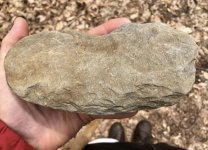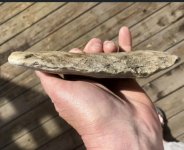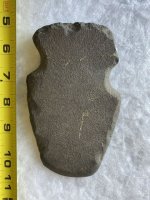CreekSide
Silver Member
- Jan 31, 2023
- 3,724
- 12,805
The hoes in my area leave a lot to be desired. This one isn’t terribly ugly but I guess it was good enough to dig with. I have some worse ones. I found this one in a creek. I actually found it a few times trying to decide if it worth bringing home. I finally caved in and brought it back.
So if anyone has found some nice ones I’d be happy to see them.
So if anyone has found some nice ones I’d be happy to see them.
Attachments
Upvote
8







